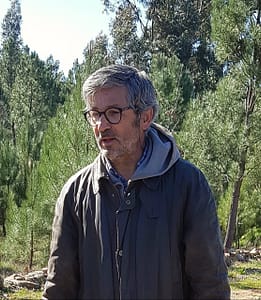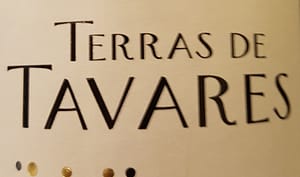

Before this week I had known this producer mostly for his entry-level Rufia! wines (such as the one mentioned here). That is totally changed now after a visit, complete with dinner, breakfast and and overnight stay in João and Luisa’s agro-tourism facilities.
Now I have come to know a man with deep knowledge, not only of vinegrowing, but in many other fields, such as culture and cooking, and one who loves the sport of discussion. He refreshed my memory too, as we had in fact met at a tasting of Dão rosés many years ago.
João Tavares da Pina’s farm Quinta da Boavista is located outside Penalva do Castelo, Dão. We are in a cool climate around 500 meters above sea level, and the soil is clay shale (from marine sediments) and a small percentage of the, for Dão, usual granite. This mixture gives both freshness and mineraliy. Some more key words are recovering of endangered grape varieties, biodiversity, no-till, manual harvest, chamomile or lavender at the beginning of a vine row, spontaneous fermentation and only a small dose of sulphur.
João looks for freshness, that’s true, but also the decadent underwood aromas, and mushrooms. To achieve this he uses high fermentation temperatures (32°C is not unusual). Also, the jaen grape is well suited to this area’s longer growing season.
The 1997 was the first wine after having decided not to sell all the grapes to the cooperative. This is a blend of jaen and touriga nacional, around 60-40.
Terras de Tavares Reserva 1997 (João Tavares da Pina, Quinta da Boavvista)
Red colour with some evolution. Forest fruits, aromatic herbs and mushrooms. Fine structure, with just the right touch of tannins and acidity. Long and elegant. I would say fresh, and definitely full of life.
Price: Medium
Leave a Comment














